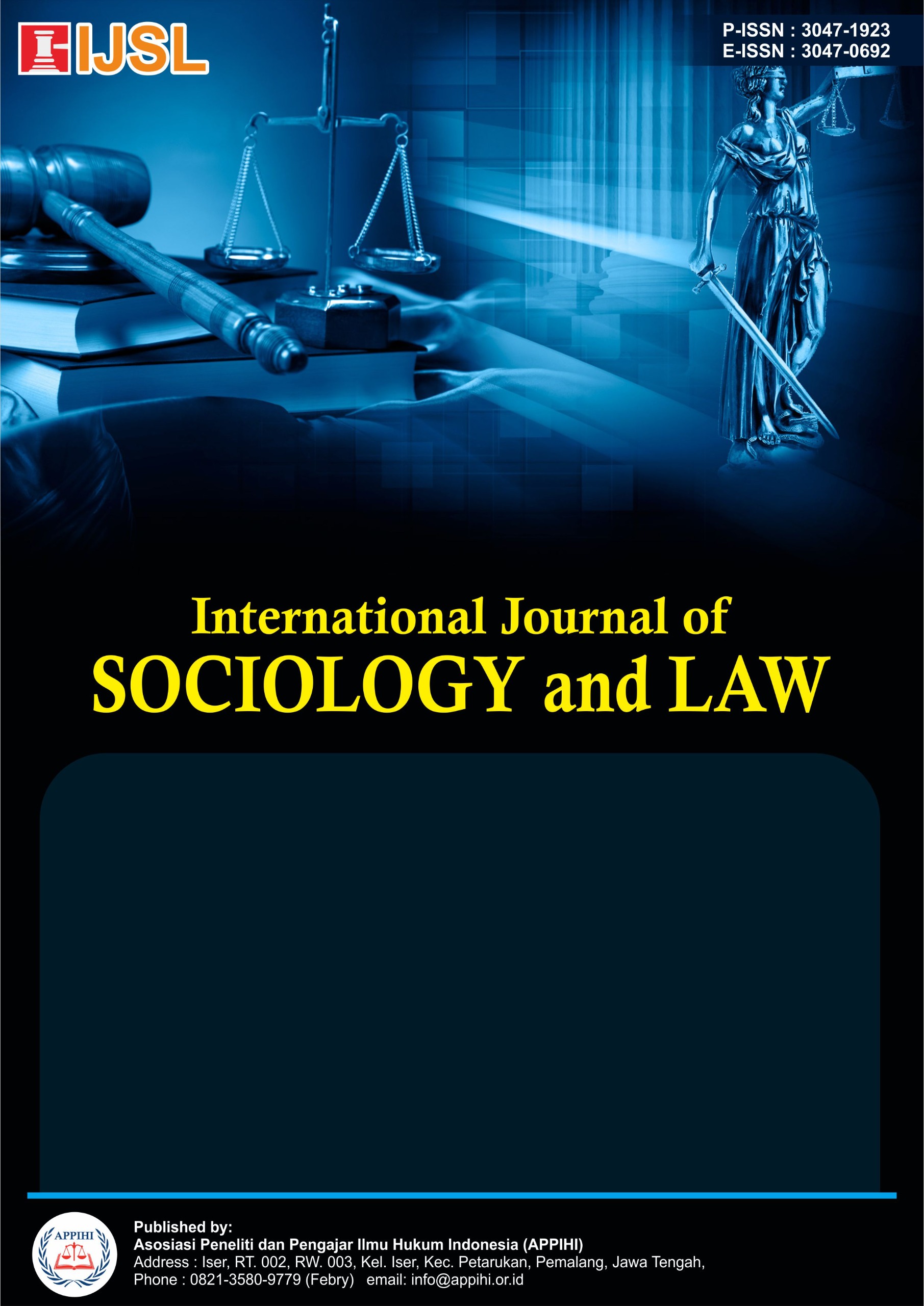Forced Marriage as a Form of Sexual Violence Against Child Victims of Rape from a Human Rights Perspective
DOI:
https://doi.org/10.62951/ijsl.v2i2.605Keywords:
Child, Forced Marriage, Human Rights, Sexual ViolenceAbstract
Forced marriage of child victims of rape is a phenomenon that places children in a position of double victimization, both as victims of sexual crimes and as subjects who lose their human rights to determine their future freely and with dignity. This research aims to examine forced marriage in the framework of sexual violence against children from the perspective of criminal law and human rights. In its approach, this research uses a normative juridical method with a statutory approach, conceptual approach, comparative approach, and case approach. The results show that forced marriage not only violates children's rights to protection from sexual violence as stipulated in Law Number 12 of 2022 concerning Criminal Acts of Sexual Violence, but also violates the principles of non-discrimination, the best interests of the child, and the right to physical and psychological integrity as guaranteed in the Convention on the Rights of the Child (CRC) and other international human rights instruments. This research emphasizes the importance of legal recognition of forced marriage as a form of sexual violence and the need for a comprehensive policy in the handling and recovery of child victims.
Downloads
References
Arief, B. N., Masalah penegakan hukum dan kebijakan hukum pidana dalam penanggulangan kejahatan, Jakarta: Prenada Media, 2018.
Bazemore, G., and Umbreit, M., “Balanced and restorative justice,” in Juvenile Justice Sourcebook: Past, Present, and Future, 2004.
Diva, S., “Pemaksaan pernikahan terhadap korban tindak pidana kekerasan seksual sebagai bentuk pelanggaran dalam perspektif viktimologi,” Skripsi, Fakultas Hukum, Universitas Pasundan, 2023.
Indonesia, Keputusan Presiden Republik Indonesia Nomor 36 Tahun 1990 tentang Pengesahan Convention on the Rights of the Child (Konvensi Hak Anak).
Komnas Perempuan, Catatan Tahunan 2022: Bayang-Bayang Stagnansi – Daya Pencegahan dan Penanganan Berbanding Peningkatan Jumlah, Ragam dan Kompleksitas Kekerasan Berbasis Gender terhadap Perempuan, 2022.
Marcoes, L., Nikah Paksa dan Celah Hukum Adat: Studi Kasus Indonesia Timur, Rumah Kita, 2019.
Munti, R. B., “Perkawinan anak: Kekerasan seksual yang dilegalkan,” Jurnal Perempuan, vol. 2, 2016.
Putusan Mahkamah Konstitusi Republik Indonesia Nomor 22/PUU-XV/2017 tentang Pengujian Undang-Undang Nomor 1 Tahun 1974 tentang Perkawinan terhadap UUD 1945.
Suryandari, D., “Pendekatan berbasis korban dalam penanganan tindak pidana kekerasan seksual,” Jurnal Hukum dan Pembangunan, vol. 52, 2022.
Undang-Undang Dasar Negara Republik Indonesia Tahun 1945.
Undang-Undang Nomor 1 Tahun 1946 tentang Peraturan tentang Hukum Pidana.
Undang-Undang Nomor 1 Tahun 2023 tentang Kitab Undang-Undang Hukum Pidana (KUHP).
Undang-Undang Nomor 12 Tahun 2022 tentang Tindak Pidana Kekerasan Seksual.
Undang-Undang Nomor 16 Tahun 2019 tentang Perubahan atas Undang-Undang Nomor 1 Tahun 1974 tentang Perkawinan.
Undang-Undang Nomor 35 Tahun 2014 tentang Perlindungan Anak.
Undang-Undang Nomor 39 Tahun 1999 tentang Hak Asasi Manusia.
Wafiuddin, M., “Undang-Undang Tindak Pidana Kekerasan Seksual tentang Pemaksaan Perkawinan Perspektif Feminist Legal Theory,” Skripsi, Institut Agama Islam Negeri Ponorogo, 2022.
Wajdi, F., “Tantangan reformasi hukum dalam masyarakat patriarkal,” Jurnal Hukum Ius Quia Iustum, vol. 26, 2019.
Zahir, D. D., “Pemaksaan perkawinan oleh orang tua dalam peraturan perundang-undangan di Indonesia,” Skripsi, Fakultas Syariah dan Hukum, Universitas Islam Negeri Syarif Hidayatullah Jakarta, 2020.
Downloads
Published
How to Cite
Issue
Section
License
Copyright (c) 2025 International Journal of Sociology and Law

This work is licensed under a Creative Commons Attribution-ShareAlike 4.0 International License.





